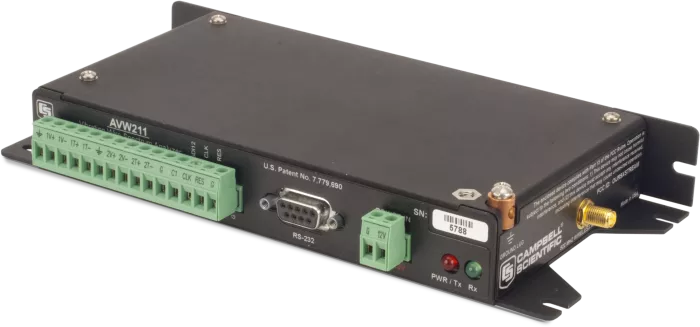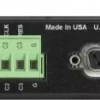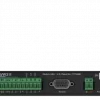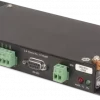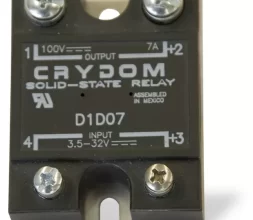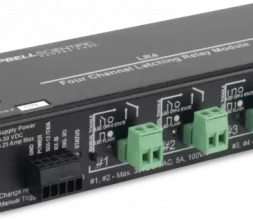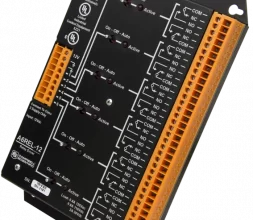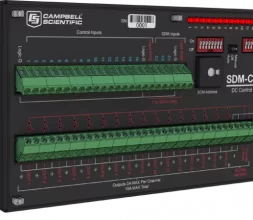Overview
The AVW206 is a vibrating-wire analyzer module that includes an internal 910 to 918 MHz spread-spectrum radio for wireless communication, typically used in the U.S. and Canada. With this vibrating-wire analyzer module, your data logger can measure vibrating-wire strain gages, pressure transducers, piezometers, tiltmeters, crackmeters, and load cells. These sensors are used in a wide variety of structural, hydrological, and geotechnical applications because of their stability, accuracy, and durability.
Benefits and Features
- Provides better measurements by significantly reducing incorrect readings caused by noise sources
- Interfaces two vibrating-wire sensors; more sensors may be connected if an AM16/32B multiplexer is used
- Self-checking diagnostics give continual feedback on sensor condition
- High resolution—less than 0.001 Hz (industry standard is 0.1 Hz)
- Low current drain
- Remote, wireless operation with on-board radio
- Interfaces both temperature and frequency measurements from vibrating-wire sensors
Detailed Description
The AVW211 uses vibrating-wire spectral-analysis technology (VSPECT®). VSPECT® observes the incoming sensor signal, performs a Fourier transform and a spectral analysis (transforming the time series into individual sinusoidal components in the frequency spectrum), and determines the sensor frequency by identifying the largest signal in the acceptable range while filtering out environmental and electrical noise.
The AVW211 analyzer module also provides many self-checking diagnostics such as vibrating-element signal strength, signal-to-noise ratio, vibrating-element signal decay ratio, and incorrect signal response. These diagnostics can be running in the background to give continual feedback of the condition for each sensor.
The AVW211 typically transmits its data to an RF411A spread-spectrum radio that is connected to the data logger. The AVW211 can also be connected directly to the data logger.
Specifications
| -NOTE- | Electrical specifications are valid over a -25° to +50°C range unless otherwise specified. Non-condensing environment required. |
| Internal Radio Frequency Range | 920 to 928 MHz |
| Radio Power | 250 mW Older AVW211 analyzer modules (serial # < 11676) have 100 mW radios. |
| Number of Vibrating-Wire Sensors Measured | Up to 2 vibrating-wire sensors can be connected to the analyzer module. Additional sensors can be measured by using an AM16/32-series multiplexer. |
| Power Requirements | 9.6 to 16 Vdc |
| Analog Input/Outputs | 2 differential (DF) vibrating-wire measurements (V+ and V-) and 2 single-ended (SE) ratiometric resistive half-bridge measurements (T+ and T-) for vibrating-wire sensor’s onboard temperature sensor. |
| Digital Control Ports | 3 digital control ports (C1 – C3)
|
| RS-232 Port | 1 9-pin RS-232 port (for connecting to a data logger COM port) |
| Measurement Resolution | 0.001 Hz RMS (±250 mV differential input range; -55° to +85°C) |
| Measurement Accuracy | ±0.013% of reading (±250 mV differential input range; -55° to +85°C) |
| Input Voltage Range | ±250 mV (differential) for vibrating-wire inputs |
| Common Mode Range | ±25 V |
| Baud Rates | Selectable from 1200 to 38.4 kbps (ASCII protocol is one start bit, one stop bit, eight data bits, and no parity.) |
| Memory |
|
| CE Compliance Standards to which Conformity Is Declared | EC61326:2002 |
| Dimensions | 21.6 x 11.18 x 3.18 cm (8.5 x 4.5 x 1.2 in.) |
| Weight | 0.43 kg (0.95 lb) |
Typical Current Drain @ 12 Vdc |
|
| Quiescent, Radio Off | ~0.3 mA |
| Radio Duty Cycling 1 s | ~3 mA (includes quiescent current) |
| Radio Always On | ~26 mA (radio transmit current 100 mA) |
| Active RS-232 Communication | ~6 mA (3 s after communication stops, the current will drop to the quiescent current) |
| Measurement | ~25 mA (averaged over the 2 s) |
Compatibility
Note: The following shows notable compatibility information. It is not a comprehensive list of all compatible or incompatible products.
Data Loggers
| Product | Compatible | Note |
|---|---|---|
| CR10 (retired) | The CR10 supports the SDI-12 mode only. | |
| CR1000 (retired) | ||
| CR1000X | ||
| CR10X (retired) | The CR10X supports the SDI-12 mode only. | |
| CR200X (retired) | ||
| CR206X (retired) | ||
| CR211X (retired) | ||
| CR216X (retired) | ||
| CR23X (retired) | The CR23X supports the SDI-12 mode only. | |
| CR295X (retired) | ||
| CR3000 (retired) | ||
| CR500 (retired) | ||
| CR5000 (retired) | The CR5000 supports the SDI-12 mode only. | |
| CR510 (retired) | ||
| CR800 | ||
| CR850 | ||
| CR9000X (retired) |
Mounting Equipment
| Product | Compatible | Note |
|---|---|---|
| ENC10/12 | If using the RS-232 port, the AVW211 must be mounted flat to fit in an ENC10/12. | |
| ENC10/12R | If using the RS-232 port, the AVW211 must be mounted flat to fit in an ENC10/12R. | |
| ENC12/14 | If using the RS-232 port, the AVW211 must be mounted flat to fit in an ENC12/14. | |
| ENC14/16 | ||
| ENC16/18 | ||
| ENC24/30 | ||
| ENC24/30S |
Additional Compatibility Information
Sensors
The AVW211 Vibrating-Wire Spectrum Analyzer Module allows our data loggers to measure vibrating-wire strain gages, pressure transducers, piezometers, tiltmeters, crackmeters, and load cells.
Communications
The AVW211’s internal spread-spectrum radio can transmit data to an AVW211, RF411A, RF411, or RF431. The AVW211 does not have a transparent mode, and therefore its internal radio cannot communicate with an RF410 radio.
Enclosure Considerations
The AVW211 requires a desiccated, non-condensing environment. A Campbell Scientific enclosure is recommended when the analyzer module is in the field. The AVW211 has built-in keyhole flanges for mounting to an enclosure backplate.
Power Considerations
The AVW211 is typically powered by the data logger’s power supply.
Operating System Considerations
Newer analyzer modules with 250 mW radios must use OS 5 or higher for their operating system.
For more detail, click here>>>



